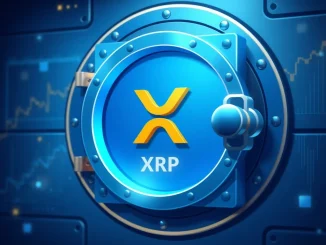
The world of digital assets is constantly evolving, and with it, the need for clearer rules. A significant point of discussion emerged recently regarding meme coin regulation. At the Bitcoin 2025 Conference, U.S. Securities and Exchange Commission (SEC) Commissioner Hester Peirce offered her perspective, suggesting a novel approach to governing these unique digital assets.
What Did Commissioner Peirce Say About SEC Crypto and Meme Coins?
Speaking at the prominent industry event, Commissioner Hester Peirce, often dubbed ‘Crypto Mom’ for her more nuanced views on digital assets compared to some of her colleagues, addressed the peculiar nature of meme coins. She noted that, in her view, these assets often resemble collectibles more than traditional securities. This distinction is crucial because, under current frameworks, if something is not considered a security, it typically falls outside the primary jurisdiction and protections offered by U.S. securities laws enforced by the SEC crypto division.
Her comments, as reported by Odaily News, highlight a perceived gap in the existing regulatory landscape. The current set of digital asset rules wasn’t designed with assets like meme coins specifically in mind, leading to uncertainty for developers, investors, and regulators alike.
Why Do Meme Coins Pose a Unique Regulatory Challenge?
Meme coins differ significantly from cryptocurrencies like Bitcoin or Ethereum, which often have clearer use cases or underlying technology foundations. Meme coins are typically:
- Community-driven and often based on internet jokes or cultural trends.
- Highly volatile and speculative.
- Often lack a clear whitepaper, development team, or specific utility beyond being a tradable asset.
This makes applying traditional securities tests (like the Howey Test) complex. Is there an ‘investment of money’? Yes. Is there an ‘expectation of profits’? Usually. Is it derived from the ‘efforts of others’? This is where it gets tricky. The decentralized, community-led nature of many meme coins blurs the lines, making it difficult for the SEC crypto division to definitively classify them under existing digital asset rules.
What Could a Meme Coin Regulatory Committee Achieve?
To address this complexity and the need for crypto regulatory clarity, Commissioner Peirce proposed the establishment of a dedicated Meme Coin Regulatory Committee. The potential benefits of such a committee could include:
- Focused Expertise: Bringing together regulators, industry experts, legal scholars, and potentially even community representatives to specifically study meme coins.
- Tailored Frameworks: Developing regulatory approaches or guidelines that are appropriate for the unique characteristics of meme coins, rather than trying to force them into existing molds.
- Identifying Risks: Better understanding the specific risks associated with meme coins, such as market manipulation, fraud, and extreme volatility, to inform protective measures.
- Providing Clarity: Offering clearer guidance to the market on how meme coins might be viewed or treated under potential future regulations.
The formation of such a committee would signal a proactive step towards acknowledging the existence and unique challenges posed by this segment of the digital asset market, aiming for better meme coin regulation.
Addressing Regulatory Gaps and Seeking Crypto Regulatory Clarity
Commissioner Peirce’s suggestion underscores a broader point she has made consistently: the need for greater crypto regulatory clarity across the entire digital asset space. The current approach, often perceived as ‘regulation by enforcement,’ creates uncertainty and can hinder innovation in the U.S.
Clearer guidance is essential for several reasons:
- Investor Protection: While Peirce noted meme coins are outside *securities* law protections, regulatory clarity could still lead to rules around exchanges listing them, disclosures, or anti-fraud measures.
- Market Integrity: Clear rules can help prevent manipulation and ensure fairer markets.
- Innovation: Developers and projects need to understand the rules of the road to build and operate confidently in the U.S.
- Institutional Adoption: Traditional financial institutions require regulatory certainty before fully engaging with digital assets, including potentially finding ways to interact with or offer products related to assets like meme coins within defined parameters.
The discussion around meme coin regulation by a high-profile regulator like Hester Peirce at a major conference like Bitcoin 2025 signals that these assets, despite their often-lighthearted origins, are being taken seriously in regulatory circles.
What Are the Next Steps for Digital Asset Rules?
While a Meme Coin Regulatory Committee is currently just a proposal from one commissioner, it reflects a growing recognition that the existing digital asset rules may not be sufficient for all types of crypto assets. The path forward likely involves continued dialogue between regulators, lawmakers, and the industry.
Achieving comprehensive crypto regulatory clarity will require careful consideration of the diverse nature of digital assets. Whether through dedicated committees, new legislative frameworks, or updated guidance, the goal is to foster a market that protects investors while allowing for responsible innovation.
Conclusion: A Step Towards Tailored Meme Coin Regulation?
Commissioner Hester Peirce‘s suggestion of a Meme Coin Regulatory Committee is a notable development in the ongoing conversation about SEC crypto oversight. By proposing a dedicated body to study and potentially suggest tailored approaches for meme coin regulation, she highlights the unique challenges these assets present and the need to move beyond applying outdated frameworks. While the formation of such a committee is far from certain, the proposal itself is a significant indicator that regulators are grappling with how to incorporate all facets of the digital asset market into a clearer, more predictable regulatory future for digital asset rules.



